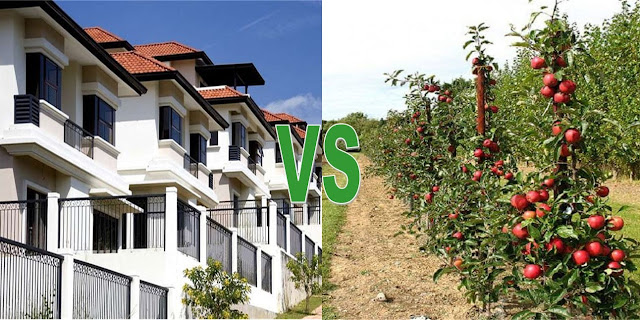Growing Pixie oranges and pawpaws together is an innovative approach that can yield numerous benefits to both crops. Pixie oranges, known for their sweet and juicy flavour, are a popular citrus variety. Similarly, pawpaws have gained popularity with their unique tropical taste in recent years.

Pixie trees inter-cropped with pawpaw
You can optimise space, promote biodiversity, and enhance the ecosystem's overall health by cultivating these two plants together. In this article, let us explore the various advantages of growing pixie oranges and pawpaws together, highlighting this symbiotic relationship's ecological, economic, and horticultural aspects.
Advantages of Inter-cropping Pixie and Pawpaws
1. Maximising Space - 1 farm producing 2 fruits at the same time
Cultivating Pixie oranges and pawpaws together maximises land utilisation. Both crops have almost similar growth requirements, such as climate and soil conditions. They both do well in warm or hot areas such as the ukambani counties of Makueni, Machakos and Kitui. The hot Baringo County is also hot on the trail and, gladly, also the coastal areas of Kwale and Taita Taveta are embracing pixie and pawpaw farming.
A bit of irrigation may be necessary for pixie oranges, as they are less drought-resistant than pawpaws. By combining these two plants, a farmer can utilise the same plot of land for multiple harvests, ultimately achieving higher productivity per unit area.
To successfully cultivate the two fruit trees together, Pixies would require a spacing of 5m by 6m, while pawpaws, which usually require a 2m by 2m spacing, would be grown between the pixie trees.
2. Ecological diversity - Attract more pollinators hence a bigger harvest
Moreover, growing these fruits together promotes ecological diversity. Each plant attracts different pollinators, such as bees and butterflies, thereby increasing the chances of successful cross-pollination. This intermingling of insect activity enhances the overall biodiversity of the area, leading to a healthier ecosystem and a more sustainable agricultural practice. Bugs like ladybugs, lacewings, and parasitic wasps are great deterrents for other pests that will eat your fruit crops.
3. Continuous income - When 1 fruit goes off-season, the other gives you money
You can benefit from the combination of these crops in terms of economics. Pawpaws have a much faster maturity rate than pixies, providing an earlier source of income. In hotter climates, pawpaws start producing as early as six months from planting, and pixie oranges will start producing in the second year.
Additionally, by diversifying their produce, farmers can tap into different market segments, and ensure that they are always selling something. for example, in most of the hot areas, the peak production season for pawpaw spans the months of November through to March. The pixie peak season then sets in from April through to September. Hence a farmer who has both of these trees on his land increase sales and revenue streams.
4. Reduced risk of loss due to pests and diseases outbreak
Growing pawpaw and pixie oranges together reduces the risk of a farmer being thrown out of business due to an outbreak of a specific pest or disease. Pixie oranges and pawpaw trees have distinctive pest profiles, meaning pests and diseases affecting one crop may not necessarily affect the other. Hence, by planting the two fruit trees on the same land, farmers reduce the risks associated with the outbreak of a specific pest.
Inter-cropping pixie and pawpaw also disrupts the build-up of pests and diseases by creating a more diverse environment, hence minimising the use of pesticides and promoting a more environmentally friendly farming practice.
5. Efficient soil nutrient utilisation - pawpaws eat from the top layer, pixie roots search deeper
Pixie orange and pawpaw inter-cropping offers an opportunity to fine-tune soil conditions. Pixie trees have deeper root systems, capable of accessing nutrients in lower soil layers. As a result, they alleviate nutrient competition among the pawpaw trees, ensuring a more balanced nutrient availability throughout the growing season. This synergy helps maintain the health and vigour of the plants, ultimately leading to better fruit quality and enhanced harvests.
Detailed information on pixie fruit farming in Kenya can be found on; Pixie Orange Farming: A Worthy Investment For The Year 2023.
Read also for pawpaw farming in Kenya; Pawpaws Make You Money While Asking For Very Little Input From You.
- An integrated pest management
system is necessary as you will deal with more than one pest type.
- Integration of Hass avocado with
pawpaws can be practised in warm climates. Avocados do well in cool to
warm climates as opposed to pawpaws, which do well in warm to hot
temperatures.
- The main crop should be avocado or
pixie; pawpaw should be used to generate cash-flows as early as month six
to supplement the primary crop and cushion the farmer. Additional income
can be used to expand primary crop acreage or employ economic practices
such as drip irrigation, solar-powered water pumping, digging a
self-sufficient borehole, and having a huge capacity dam.
- It is always advisable to have a
good area for expansion as fruit farming is a very profitable venture.
- More farmyard manure or organic fertilisers should be applied from time to time to improve fertility and balance competition.
- An integrated pest management
system is necessary as you will deal with more than one pest type.








